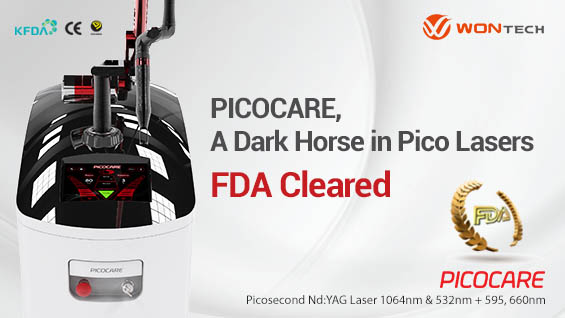
This time, we will focus on the review of principles behind pigment treatment and the cases of PICOCARE applied to the treatment of pigment diseases. Hopefully, the early part of lecture can be taken as a review part.
There are three methods for treatment of pigment diseases. The first method is to cut by applying the thermal ablation effect, in combination with the use of Er:YAG Laser.
The second method is to burn by applying the thermal effect of Long-pulsed Laser, so that the pigments can be peeled off from the epidermis.
The last method is to break each melanosome photo mechanically by using the Picosecond Laser. In that way, I have treated the pigment diseases by cutting, burning, and breaking.
In other words, I am using the Ablative Laser, Q-switched Laser, Long-pulsed Laser, Fractional Laser, etc.
Ablative Laser is used for cutting, while Long-pulsed Laser, etc., are used for treatment based on photo-thermal effect. Q-switched Laser or Picosecand Laser is used to break the pigments.
Lasers that generate photo-thermal effects are based on the extended theory of selective photo thermolysis, etc.
Other lasers are based on the theories such as TRT(Thermal Relaxation Time), SRT(Stress Relaxation Time), etc.
[Advertisement] PICOCARE - Manufacturer: WONTECH(www.wtlaser.com)]
Approach to pigment treatment based on cutting, burning or breaking
The first method involves the application of thermal ablation, Er:YAG Laser or CO₂ Laser has high absorbance for water.
The target is not melanin or blood vessel. Therefore, the depth of entry is fixed.
However, Nd:YAG Laser is said to be able to penetrate up to 1mm or 4mm per paper, and that is because the depth varies, depending on pigment distribution.
The Er:YAG Laser or CO2₂ Laser has specific fixed ablation depth penetrable by photon when it is irradiated.
- To be continued




















